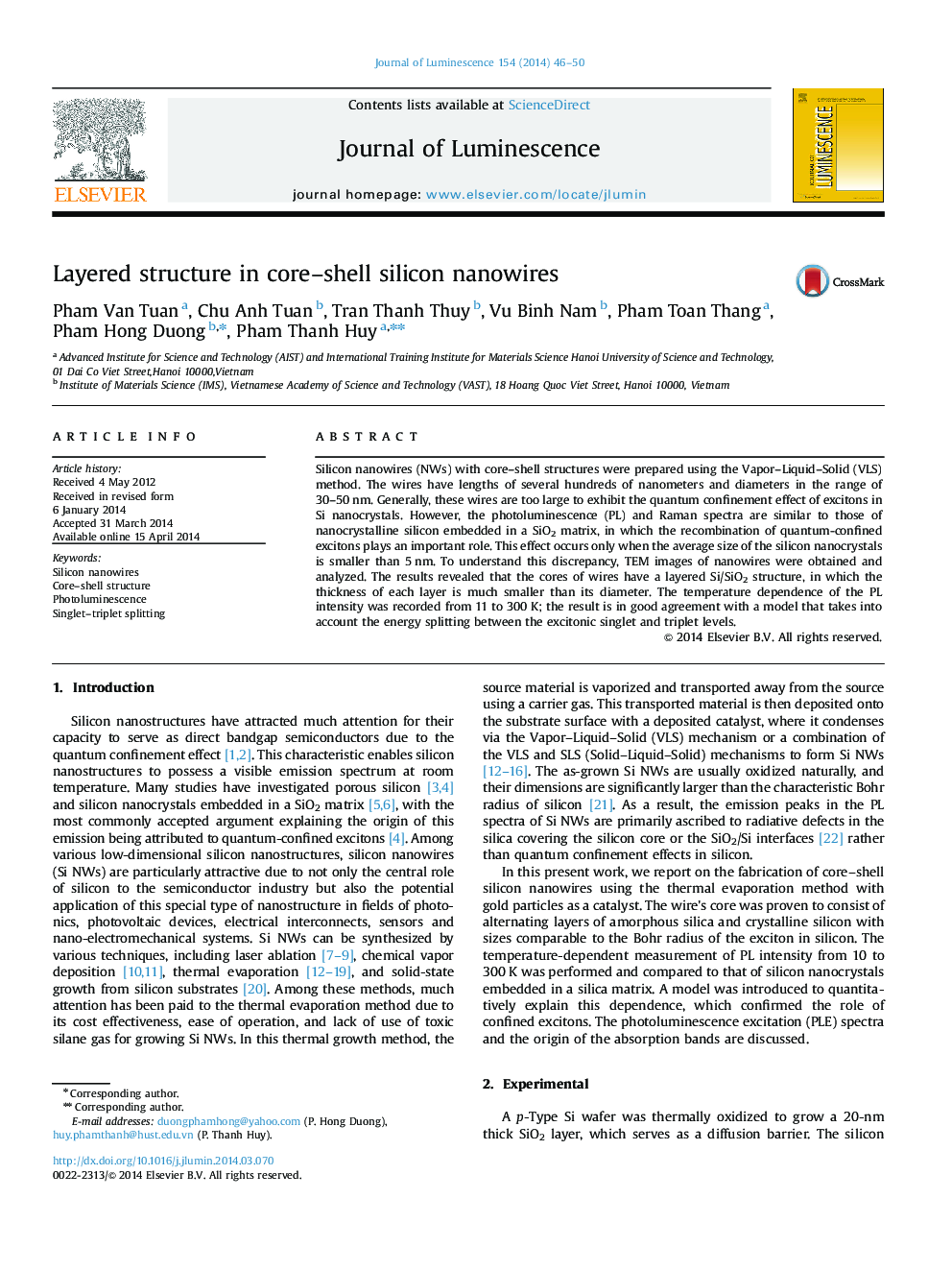| Article ID | Journal | Published Year | Pages | File Type |
|---|---|---|---|---|
| 5399739 | Journal of Luminescence | 2014 | 5 Pages |
Abstract
Silicon nanowires (NWs) with core-shell structures were prepared using the Vapor-Liquid-Solid (VLS) method. The wires have lengths of several hundreds of nanometers and diameters in the range of 30-50Â nm. Generally, these wires are too large to exhibit the quantum confinement effect of excitons in Si nanocrystals. However, the photoluminescence (PL) and Raman spectra are similar to those of nanocrystalline silicon embedded in a SiO2 matrix, in which the recombination of quantum-confined excitons plays an important role. This effect occurs only when the average size of the silicon nanocrystals is smaller than 5Â nm. To understand this discrepancy, TEM images of nanowires were obtained and analyzed. The results revealed that the cores of wires have a layered Si/SiO2 structure, in which the thickness of each layer is much smaller than its diameter. The temperature dependence of the PL intensity was recorded from 11 to 300Â K; the result is in good agreement with a model that takes into account the energy splitting between the excitonic singlet and triplet levels.
Related Topics
Physical Sciences and Engineering
Chemistry
Physical and Theoretical Chemistry
Authors
Pham Van Tuan, Chu Anh Tuan, Tran Thanh Thuy, Vu Binh Nam, Pham Toan Thang, Pham Hong Duong, Pham Thanh Huy,
